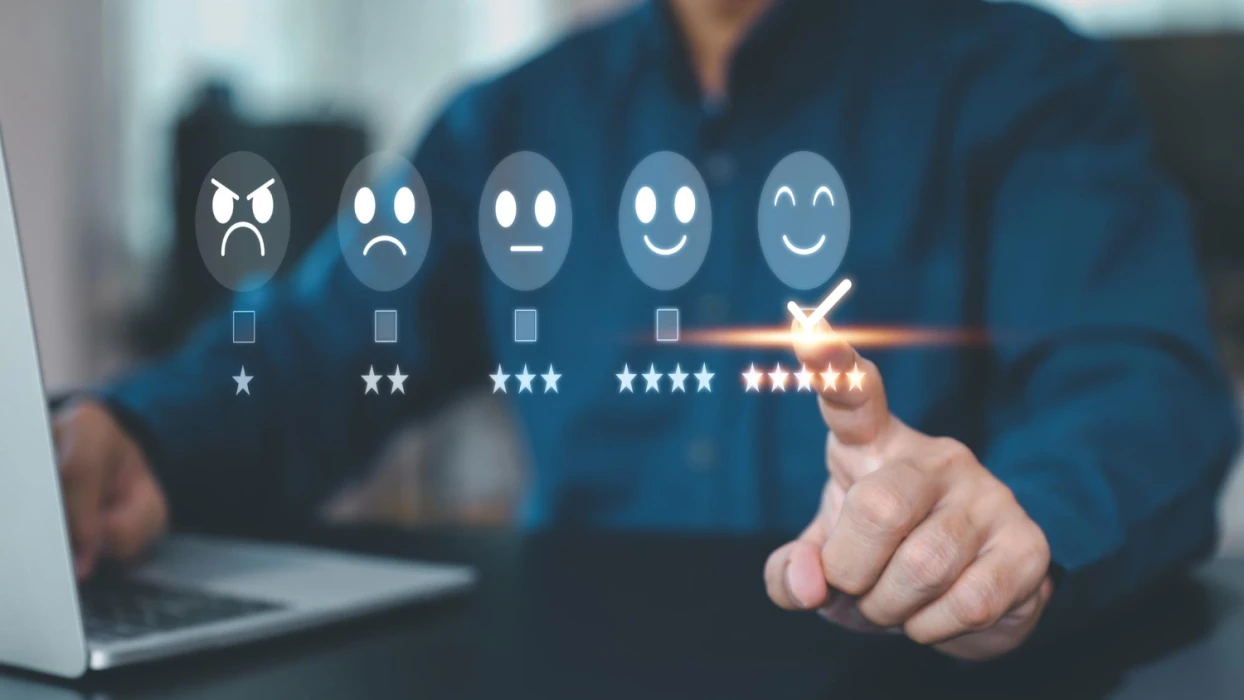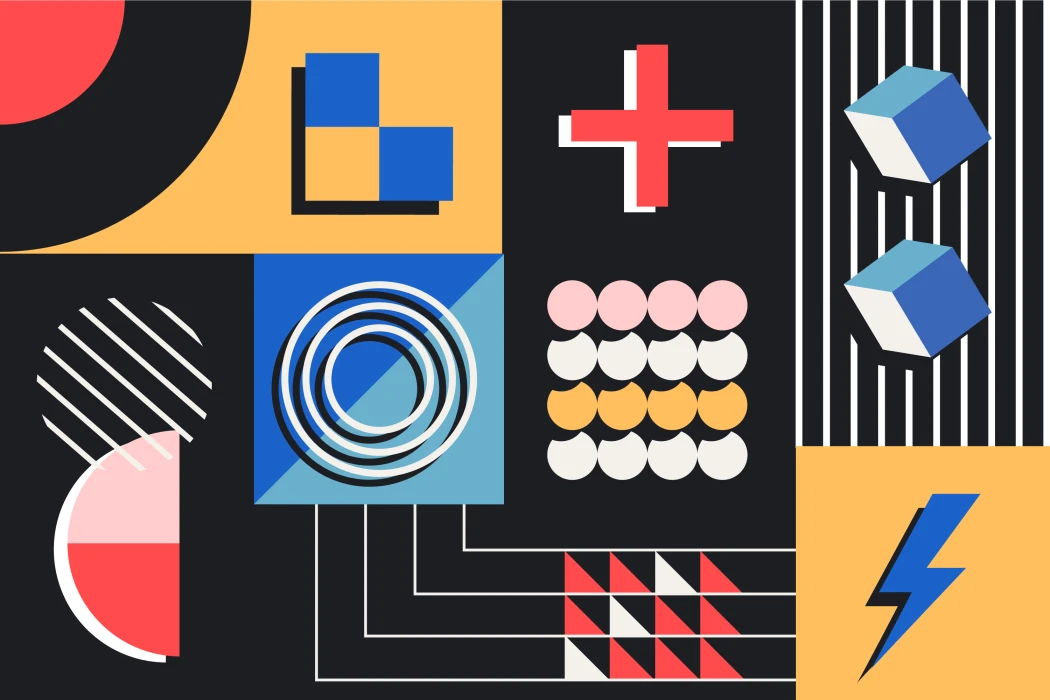In today's world, Artificial Intelligence and UI/UX Design are fundamental elements for the evolution of digital products. With that said, there arises a need to enhance and redefine the way users interact with technology. Let's explore how combining AI and UI/UX Design can create genuinely impactful experiences.
Introduction
From diverse sectors such as health and marketing to Gartner's projection, estimating a remarkable 21.3% growth in AI software, we are witnessing the omnipresence of artificial intelligence.
This article will examine how AI can provide relevant insights into user behavior, giving designers an enhanced and informed understanding. This is a dive into the digital design world and a critical analysis of how the partnership between AI and UX/UI designers redefines the creation process, promoting effectiveness and innovation.
What is Artificial Intelligence?
AI is like digital alchemy, where human tasks are autonomously simulated to provide organizations with valuable insights, resulting in more efficient solutions. Here's how it works: computational systems absorb information and learn the rules to process it. Then, AI provides insights to guide decisions, even making necessary adjustments. AI acts as a technological maestro, enhancing performance in various areas. So, let's explore this fascinating universe where technology impressively mimics life.
How Artificial Intelligence Enhances UX/UI Design?
Integrating Artificial Intelligence into UI/UX Design can be a powerful alliance that provides benefits not only for the creators but also for the user. In short, AI enables valuable insights, optimizes processes, and elevates the quality of user experiences. Let's explore some ways in which the UI/UX designer can leverage AI:
Data-driven insights: AI analyzes large datasets, providing crucial information about user behavior and preferences. These insights guide informed decisions for design and feature improvements.
Personalization: AI customizes experiences by analyzing user patterns and behaviors and adapting to individual preferences. This results in enhanced engagement and satisfaction.
User research and testing: AI-powered tools automate aspects of user research and usability testing, including collecting feedback, identifying areas of interest, and evaluating design strengths and weaknesses.
Generative design: AI offers design options, expanding designers' creativity beyond mental barriers and exploring various possibilities.
Accessibility: AI analyzes designs, suggesting improvements to ensure accessibility for users with disabilities, addressing issues such as color contrast, and providing alternative text.
Automation of repetitive tasks: AI streamlines design by automating tasks such as image resizing and creating responsive designs, allowing designers to focus on more creative and strategic aspects.
A/B testing: AI identifies trends in user behavior, conversion rates, and other metrics, facilitating data-driven design decisions.
The Impact of AI on Other Industries
The influence of artificial intelligence on UI/UX Design is already evident across various industries and digital platforms. Let's explore how AI is shaping experiences in some of the following sectors:
E-Commerce: In e-commerce, AI is vital in personalizing product recommendations based on the user's browsing and purchase history. This approach enhances the shopping journey and boosts online interactions and transactions.
Streaming Services: Streaming platforms like Netflix and Spotify intelligently utilize AI to suggest content tailored to each user's viewing or listening habits, providing a personalized entertainment experience.
Chatbots: AI-powered chatbots offer real-time assistance on websites and applications, guiding users through interfaces, providing answers, and resolving issues. This personalized interaction represents a tangible evolution in the user experience.
Healthcare: In healthcare, AI redefines UI/UX Design, facilitating intuitive electronic records and patient-centered mobile applications. These smart solutions simplify healthcare access and management.
Finance: AI plays a crucial role in designing user-friendly banking and investment platforms, detecting fraud, and raising security standards in financial applications.
Will Artificial Intelligence Replace UX/UI Design?
For many technology professionals, artificial intelligence (AI) may threaten human knowledge and expertise. In the field of UX/UI design, AI has the potential to automate certain aspects of the design process. However, it is crucial to emphasize that while AI can enhance the efficiency of UX/UI designers, it can only wholly and partially be needed for human creativity and expertise. Below, we highlight some fundamental reasons:
Creativity and Human Intuition: AI excels in pattern recognition, data analysis, and optimization, but it still cannot fully comprehend creativity, empathy, and understanding of human emotions.
Complex Problem Solving: While AI can provide design models and ideas, UX/UI designers are indispensable for tackling complex challenges beyond conventional patterns, employing interpersonal skills and human innovation.
Ethical Considerations: AI is immersed in ethical debates, from potential biases to privacy and environmental sustainability issues. Technology professionals play a vital role in ensuring AI's ethical and transparent use.
Collaboration and Communication: UX/UI designers rely on interpersonal skills such as effective communication, presentation, negotiation, and human understanding to collaborate with multi-functional teams, stakeholders, and clients.
Conclusion
In summary, while AI can optimize efficiency, it will only partially replace human expertise and perspective. Nevertheless, UI/UX designers remain crucial for understanding user stories, creating meaningful experiences, and making ethical decisions. Therefore, at this moment, AI is viewed as a complementary tool that enhances product design quality.
As artificial intelligence continues to evolve, designers reinvent themselves as facilitators, guiding AI tools with creativity and user-centered thinking. In this process, they focus more on strategic decisions, using AI-generated insights to craft personalized and empathetic experiences.
In a nutshell, designers in an AI-driven UX/UI environment act as conductors, harmonizing AI skills with their creativity to create innovative and user-centric interfaces.
This exciting collaboration between designers and AI marks a new phase in UX/UI design evolution. As AI redefines the landscape, designers become architects of intuitive and empathetic digital experiences, driving innovation and inclusivity. This journey of AI integration into design highlights the essential role of designers, merging human creativity with technological advancements and shaping the digital experiences of the future.
Subscribe to
Our
Newsletter
Join 1,000+ people and recieve our weekly insights.

Success!
Thank your for subscribing to Buzzvel's
Newsletter, you will now
receive
amazing
tips
and insights weekly.




